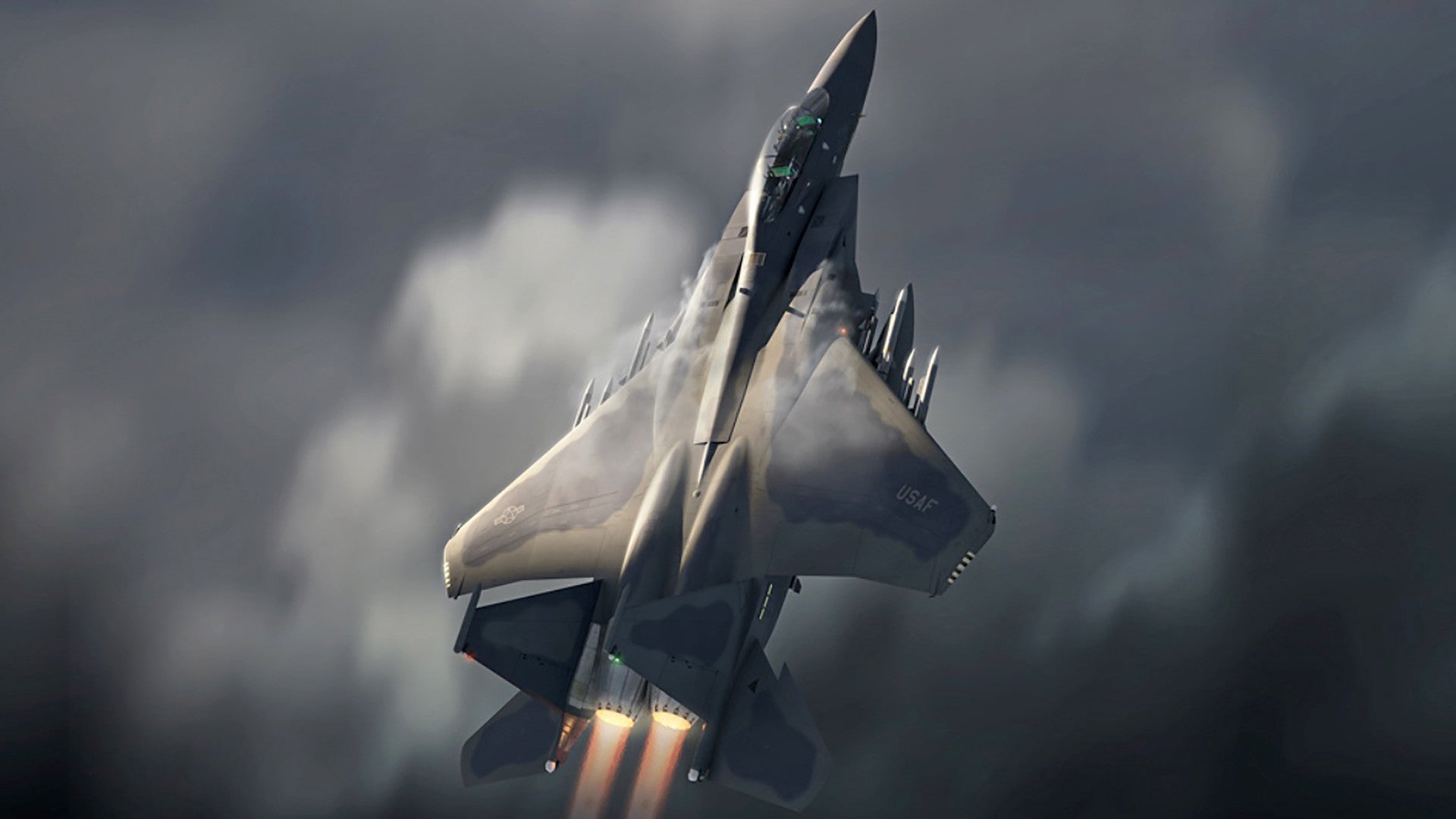The U.S. Air Force is buying an unspecified number of General Electric F110-GE-129 jet engines to power at least some of its future F-15EX Eagle fighter jets. The service says this is an “unusual and compelling urgency acquisition” and comes ahead of a formal competition to decide on the F-15EX’s powerplant, with Pratt & Whitney expected to submit their F100-PW-229 engine as an alternative.
The Pentagon first announced the deal for the F110-GE-129s, which also “including installs and spares and modernized engine monitoring system computers,” in its daily contracting notice on June 30, 2020. The award is valued at $101,345,500 and the Air Force Life Cycle Management Center expects to have all the engines and associated items and services delivered by Nov. 30, 2022.
The Air Force decided to acquire a fleet of F-15EX fighters, a variant of Boeing’s F-15 Advanced Eagle family, in 2018, which you can read about in more detail in these past War Zone pieces. The service subsequently received funding to buy an initial lot of eight jets in the 2020 Fiscal Year budget and is now asking for money to acquire an additional 12 in the upcoming 2021 Fiscal Year. The plan is to ultimately buy 144 of these aircraft, primarily to replace existing aging F-15C/D Eagles.

This initial buy of F110-GE-129s is specifically tied to the Lot 1 aircraft, according to the Pentagon announcement. If it meant to cover all eight of those aircraft, each of which will need two engines, then the contract should include at least 16 of these 29,400-pound thrust class afterburning turbofans.
In January, the Air Force had announced plans to acquire the F-15EXs, along with F110-GE-129s to power them, through sole-source contracts to Boeing and General Electric, respectively. This particular engine is the only one that Boeing has already certified to work with Advanced Eagle models, including Saudi Arabia’s F-15SA variant and the newest F-15QA for Qatar. The F-15EX is derived from the F-15QA, which is presently the most advanced F-15 variant in production. The F110-GE-129 also powers South Korea’s F-15K Slam Eagles and Singapore’s F-15SGs.

However, the Air Force subsequently changed course after it became apparent that Pratt & Whitney planned to protest the sole-source contract award and it will now hold an open competition. Pratt & Whitney is expected to pitch the afterburning version of its F100-PW-229, which is in the 29,160-pound thrust class, and is also already found on late-model Air Force F-15E Strike Eagles and the Israeli Air Force’s F-15Is. It’s also worth noting that the Air Force also flies Block 50 and 52 F-16C/D Viper fighter jets that use the F110-GE-129 and F100-PW-229, respectively.
The most immediate issue, of course, is that the competition for the F-15EX’s engine, as well as the time it might take to certify the F100-PW-229 on those jets, something the Air Force says Pratt & Whitney would have to pay to do itself, could easily push back these jets’ entry into service. Mitigating delays in the development of the F-15EX variant itself over the engine issue is very likely the “unusual and compelling urgency” that Air Force officials cited when seeking approval to buy at least some F110-GE-129s now.
The Air Force could eventually buy as many as 480 of whatever engine type it picks in the end making this a very lucrative competition. Winning could be especially important for Pratt & Whitney, which is facing the prospect of losing other engine business with the Air Force in the coming years, including with respect to the service’s B-52 bombers and its F-35A Joint Strike Fighters.
Pratt & Whitney remains the prime contractor supporting the sustainment of the TF-33 engines for the B-52s, but the Air Force now has a re-engining effort underway. The Connecticut-headquartered engine-maker had initially lobbied for simply continuing to use the aging TF-33s, but now plans to submit the PW815, which is Canadian subsidiary produces, to the competition. General Electric and Rolls-Royce are also vying for that contract, which is set to be extremely profitable for whoever wins given that each of the 76 bombers will need eight new engines.

The F-35 Joint Program Office is also set to release an F-35 Propulsion Road Map for 2035, which might include an option to re-engine F-35As, as well as B and C models, as well as supply new engines for future Joint Strike Fighters. This could apply to Air Force F-35As, as well as U.S. Marine Corps F-35Bs and U.S. Navy F-35Cs, along with variants in service or on order elsewhere around the world.
Pratt & Whitney presently supplies the F135 engines that power all three variants, but General Electric and Rolls-Royce would be sure to compete to build a new engine. The latter two companies had previously won a deal as a team to produce an alternate F136 engine for the F-35 family, work on which was canceled in 2011.

The jet engine industry, worldwide, is facing a seriously uncertain future in general amid the global economic downturn as a result of the COVID-19 pandemic. The air travel industry has been particularly hard hit, which has had second-order impacts on the aviation industry, as a whole.
It remains to be seen how all of this may or may not impact the decision on what engine will ultimately power the bulk of the F-15EX fleet, as well as the schedule for the program as a whole. What is clear is that the Air Force believes it is an urgent necessity to buy some F110-GE-129s now to keep everything on track.
Contact the author: Joe@thedrive.com
